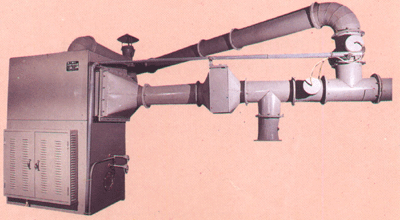Catalytic organic exhaust
Catalytic organic exhaust
(Catalyst Type Waste Gases Purify Equipment)

Operating principle:
Touch coal catalytic converter is to use catalysts to reduce the role of reaction temperature, so that organic emissions at a lower temperature oxidation of water and carbon dioxide, an environmentally friendly equipment. In order to achieve a certain reaction temperature, start with a set of electrically heated hot air generator warm-up of organic waste gas to the catalytic oxidation temperature. To ensure the normal operation temperature catalytic oxidation by a shell and tube heat exchangers to preheat the organic emissions.
Applicable industry:
Effectively remove the emissions of volatile organic solvents (VOCs), applicable in printing, paints, rubber, plastic, gunpowder, the semiconductor, the traditional, organic chemical industry, automotive industry, coating industry, chemical industry, food industry, shoe-makingindustry, leather industry, cosmetics industry, the automotive industry, wire and cable industry, the pharmaceutical industry, machinery industry, wood, glue industry and other industries.
Performance parameters:
- Handling gas:Organic compounds and Derivatives of benzene, Toluene, Xylene, Alcohols, Ethers, Phenols, Aldehydes and other emissions.
- Processing gas:50 Nm3/h ~ 10,000 Nm3
- Concentration range:1,000 mg/m3~ 6,000 mg/m3
- Catalytic temperature:Platinum and palladium precious metal catalyst:200 ~ 300 ℃,MnO2:300 ~ 400 ℃
- Catalyst species:Platinum and palladium precious metal catalyst、MnO2
- Catalyst airspeed:Platinum and palladium precious metal catalyst:1×104/h~2×104/h,MnO2:3×104/h
- Shell and tube heat exchangers recovery:80 %
- Purification rate:≧97 %
- Safety devices:Explosion-proof membrane
Advantage:
- The use of the catalyst reduces the reaction temperature to lower materials and operation.
- The device is small, less floor space.
- Continuous operation, automatic control.
- Does not produce NOXsecondary pollution.
Characteristics of company:
According to the conditions and requirements of the customers to plan, design, manufacture, installation and commissioning.
- Please, provide the information:
- Handling capacity (gas flow).
- Organic waste gas composition and concentration.